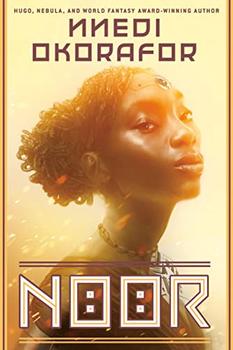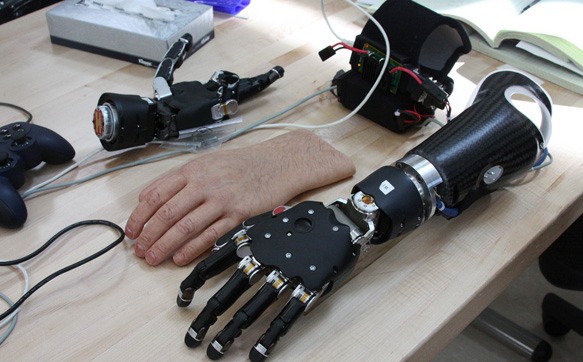Summary | Excerpt | Reviews | Beyond the Book | Read-Alikes | Genres & Themes | Author Bio

This article relates to Noor
 The protagonist of Nnedi Okorafor's novel Noor has undergone a number of procedures and augmentations to reduce her physical discomfort and improve her standard of living. Born with missing and deformed limbs, and injured years later in a car accident, being fitted with sophisticated bionic limbs grants her the strength — both physical and mental — that she was denied by circumstance during her youth. Though the book is set in the future, and thus employs some creative liberties, the technology being discussed by the author is based firmly in very real scientific and medical practices taking place now.
The protagonist of Nnedi Okorafor's novel Noor has undergone a number of procedures and augmentations to reduce her physical discomfort and improve her standard of living. Born with missing and deformed limbs, and injured years later in a car accident, being fitted with sophisticated bionic limbs grants her the strength — both physical and mental — that she was denied by circumstance during her youth. Though the book is set in the future, and thus employs some creative liberties, the technology being discussed by the author is based firmly in very real scientific and medical practices taking place now.
More than one million limb amputations are performed globally each year. In total, an estimated 2.2 million Americans are currently living with limb loss (a figure that some estimate could double by 2050). In the US, the main causes are vascular diseases (in particular diabetes), which account for 54% of overall cases (and the majority of lower limb amputations), with trauma coming in a close second at 45% (and accounting for the majority of upper body amputations).
The loss of a limb can be as devastating psychologically as it is physically. Not only does a person have to contend with physical pain, but it causes an enormous shift in the way they interact with the world, as well as the way they are perceived — by themselves and by those around them. This is certainly a driving factor in the steps being taken to constantly refine and improve the quality of prosthetic limbs on offer to those who need them.
A standard prosthetic uses a socket to fit around the residuum (also known as the stump) post-amputation. While this is the comparatively faster, easier and more affordable method of limb replacement, the function and mobility of the limb will likely be minimal, and the constant chafing caused by pressure and friction around the stump can lead to severe skin irritation and chronic muscle pain. Sadly, this discomfort leads many people to abandon the prosthesis.
Bionic limbs are a more advanced solution. Also known as neuromusculoskeletal prostheses, they attach directly to the patient's nerves, muscle and/or bone. This integration means it is possible for the limb to receive electrical signals directly from the brain — just as a natural limb would — enhancing comfort, sensation and range of motion for many users. For some, this greater sense of realism in both appearance and function can also have an enormous positive impact on their mental health, improving their overall recovery. It's important to note that bionic limbs are abandoned as well, if not as frequently as standard prosthetics. Some scientists in this field believe that making the devices easier to use will improve success rates.
In recent years, there have been advances in technology that allows users of bionic limbs to "feel" with their artificial limbs. This is accomplished by electrodes implanted in the patients' nerves and muscles, which generate tactile sensory feedback when they touch something, helping a person to control the strength and accuracy of their grip, among other benefits. This unique scientific milestone takes users of prosthetics one step closer to full, seamless integration of the device into their everyday lives. Technological breakthroughs provide ever-improving options to explore, and crucially, the opportunity for amputees to enjoy an excellent quality of life — assuming they have access to medical care (in the US, cost estimates for a lifetime of care range widely, with one source quoting as much as $2.8 million per prosthetic).
Bionic arm, courtesy of the US Navy, via Flickr
Filed under Medicine, Science and Tech
![]() This "beyond the book article" relates to Noor. It originally ran in January 2022 and has been updated for the
July 2022 paperback edition.
Go to magazine.
This "beyond the book article" relates to Noor. It originally ran in January 2022 and has been updated for the
July 2022 paperback edition.
Go to magazine.
Finishing second in the Olympics gets you silver. Finishing second in politics gets you oblivion.
Click Here to find out who said this, as well as discovering other famous literary quotes!
Your guide toexceptional books
BookBrowse seeks out and recommends the best in contemporary fiction and nonfiction—books that not only engage and entertain but also deepen our understanding of ourselves and the world around us.